
Find your inner caveman
The secret of happiness? Channel your inner caveman. Sam Pyrah reveals seven ways to go back to prehistoric basics with your lifestyle
You have been walking all day, wading through the long grass that shimmers in the sun to crest a hill and drink in the view, before slipping into the coolness of dappled woodland. You picnicked by the river, where dragonflies darted and hovered. Now, as you make your way home, your fingers are red-stained and jammy-scented from the blackberries you picked. You feel tired, but happy: a rare sense of peace and contentment in body and mind.
It’s no wonder that walking feels so uplifting and restorative: we evolved, quite literally, on two feet.
“Up until around 12,000 years ago – the blink of an evolutionary eye – everybody everywhere was a hunter-gatherer,” says Professor Daniel Lieberman, chair of the department of human evolutionary biology at Harvard University. “Your ancestors survived by foraging for plants, hunting and fishing, regularly moving from one camp to the next.”
Our bodies and brains were shaped by this lifestyle. We became efficient long-distance walkers and runners, which allowed us to range further and find a wider variety of foods.
“You had to be smart to track animals, find food, water and other resources,” says Lieberman. “You had to remember where things were. You had to be able to communicate with language and to cooperate with others. All these demands selected for our cognitive abilities, helping us develop bigger brains.”

MODERN MALAISE
But between 4,000 and 9,000 years ago, something changed. Europe transitioned into a continent of farmers (though a few hunter-gatherers, such as the Saami and Inuit, remained in marginal habitats). For the first time in the history of our species we stayed put, and we’ve been shaping our environment ever since.
In England, more than 80% of us now live in urban areas. We spend most of our time indoors (the average Brit spends less than 40 minutes a day outside) with artificial light, heat and cooling; we travel by car or train or plane; we sit for hours on end, staring at screens.
The physically active lifestyle we evolved for is now a thing of the past: more than 40% of us don’t meet minimum physical activity guidelines for health. Our naturedepleted, sedentary lives aren’t making us happy. One in four people in the UK experiences a mental-health problem each year, most commonly anxiety or depression – 6.6 million people are on anti-depressant medication. Our physical health is suffering, too. In the UK, two-thirds of adults are overweight or obese, and while we live longer, we also suffer more preventable diseases, such as cancers, heart disease, Type 2 diabetes and Alzheimer’s.
“Many of today’s afflictions are caused or aggravated by a mismatch between modern lifestyles and our bodies’ ancient biology,” says Lieberman. “We evolved to crave energy-rich foods because they were often scarce, and it takes calories to make babies. But now, with unlimited access to such foods, our evolutionary inheritance has become a liability.”
So should we revert to cave-dwelling? No one is suggesting that. “Modern society offers many advantages,” Lieberman says. “We must not get caught up in the false romantic notion that hunter-gatherers lived – or live – blissful lives. But our evolutionary history does provide clues on how to avoid getting sick. Get plenty of physical activity and eat mostly plants; avoid processed foods with lots of sugar, no fibre and added saturated fat. And don’t smoke.”
NATURAL HEALTH
Apart from diet and exercise, time spent in nature – our ancestral home – can be medicine for mind and body. “A strong body of evidence now shows that time in nature has positive health and wellbeing benefits,” says Jules Pretty, professor of environment and society at the University of Essex.
Combining movement with nature – so-called ‘green exercise’ – seems particularly powerful. Studies show that the very act of moving forward in an environment helps to generate growth in the hippocampus – the area of the brain associated with learning and memory.
When researchers compared the effects of walking in natural surroundings to exercise indoors while viewing nature scenes on a screen, they found the nature walk reduced cortisol (the ‘stress’ hormone) and improved mood the most.
One University of Washington study found that spending time in a natural environment reduces ‘rumination’ – the tendency to go over and over worries – and that walking or running in nature restores focus and promotes stress recovery and resilience. The study’s authors note that “when our hunter-gatherer forbears moved through the landscape, their safety depended on them being fully present in their surroundings in a receptive and attentive way”, and suggest that this offers an evolutionary reason as to why being in nature reduces rumination on negative thoughts.
“Good things happen when we put nature and physical activity together”
“Good things happen when we put nature and physical activity together,” says Pretty. If you’re ready to embrace your inner caveman, and spend time outdoors, here are seven ways to go Stone Age as part of your daily life…
HOW TO GO CAVEMAN…
1 Move more, more often
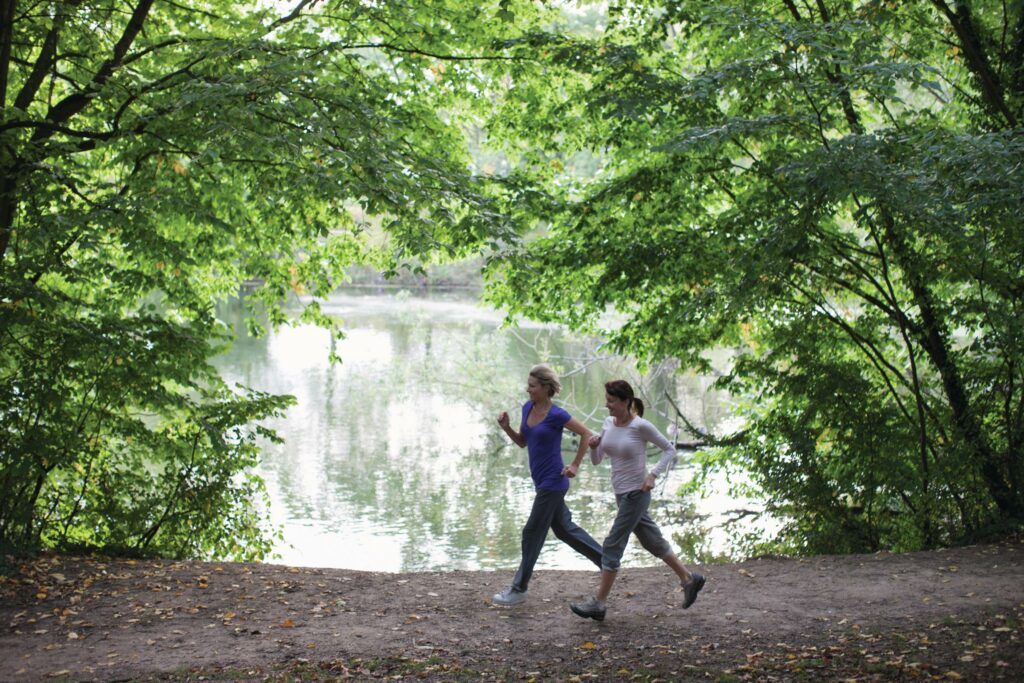
“Our bodies evolved to move,” says Hannah Beadle, CEO of WildFitness and an expert on natural movement. Members of the Hadza tribe in Tanzania, who still live as hunter-gatherers, walk around 15km a day. “Rather than thinking of movement as exercise or a ‘workout’, make it part of your life,” advises Beadle. “Walk to work, or at least part of the way. Do errands on foot; meet a friend for a walk or jog instead of for lunch or a drink.” If you already walk or run regularly, explore different routes: hunter-gatherers roamed widely, exploring and building a mental map of their surroundings.
2 Go barefoot – sometimes
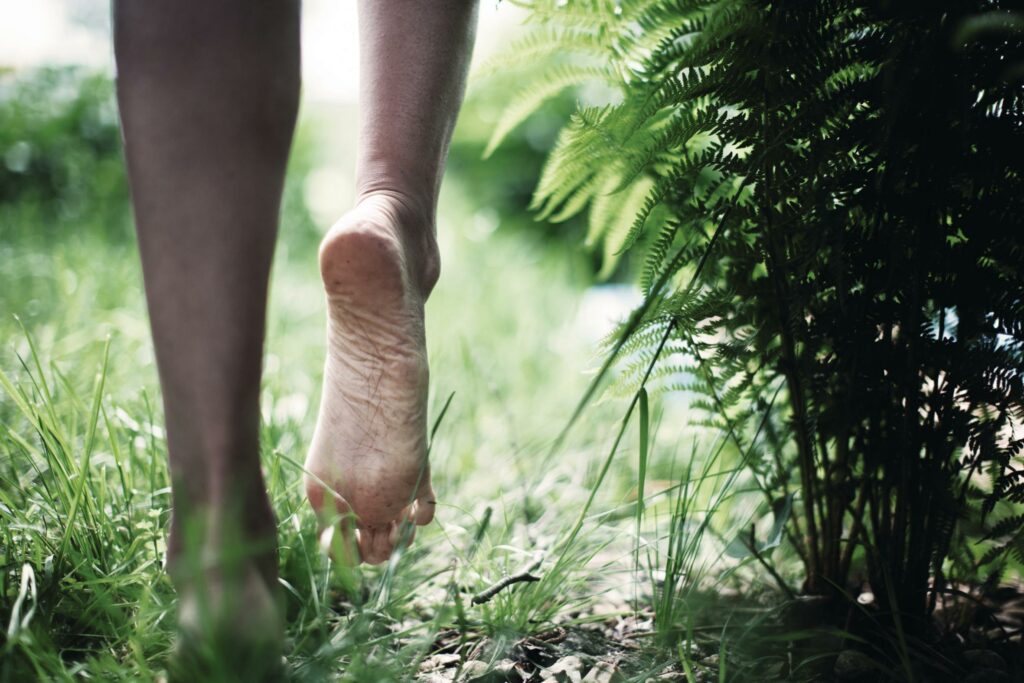
Shoes protect the feet but, says Beadle, can also restrict and weaken them. “Our feet are our foundation – our interface with the earth. There are 20,000 nerve endings on the sole of each foot. Walking barefoot stimulates these nerves, helping to bring you into your body and feel connected to your environment.” Start small by standing or walking in the garden, before experimenting with different textures underfoot.
3 See green

“Try to spend some time in nature every day,” says Beadle. “Studies show that green (eg forests) and blue (eg lakes and coastlines) environments are especially relaxing and restorative, but a lap of the park will do.” Leave your phone switched off, or out of reach.
4 Connect with nature

Hunter-gatherers had a deep connection to nature – they needed it to survive. That may be why a strong sense of nature connectedness is associated with good emotional and psychological wellbeing. “The key is attentiveness and immersion,” says Professor Jules Pretty. “Nature is never the same. Something is always happening, both good and bad. Taking time to pay attention helps embed you in your environment. Stand still and close your eyes. Count 10 different sounds that you can hear. You don’t have to know what they are – you aren’t judging, just noticing.”
5 Be a naturalist

Few people today know much about the animals and plants that live around them, but, says Richard Prideaux, professional forager and bushcraft expert, such knowledge was vital for our hunter-gatherer ancestors. “They would have consumed a vast range of plant species, and needed to know what could be found where, and at what time of year, what was good to eat, what to avoid, what could be used for medicine.” Don’t know your glow worm from your slow worm? Join your local Wildlife Trust to learn about the flora and fauna in your area, be it city park or Lakeland fell. It will offer guided walks and talks on identifying different species. Apps can be great, too: try Seek (all species), Merlin (birds) or Picture This (plants).
6 Bring it home
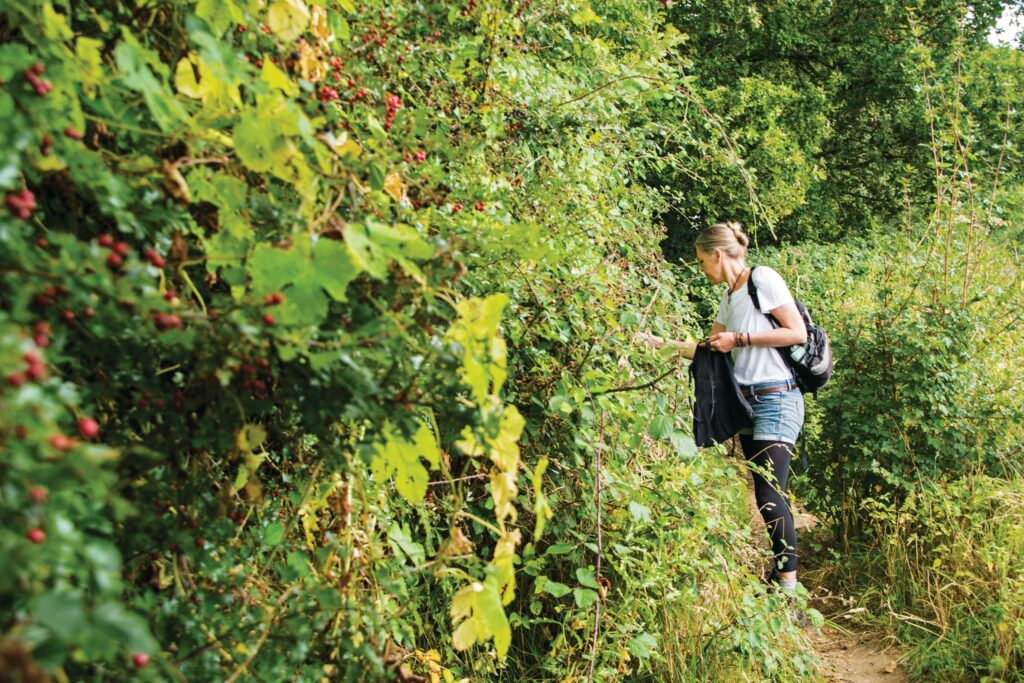
“The urge to gather is innate,” says Prideaux. “While we no longer need to forage for food, it is immensely satisfying to do so because it taps into our hunter-gatherer roots.” Forage conscientiously. “Don’t take all of what you need from one location and be mindful of habitats you might be disturbing,” Prideaux advises. “And don’t put anything in your mouth if you aren’t sure what it is.”
7 Don’t just sit there
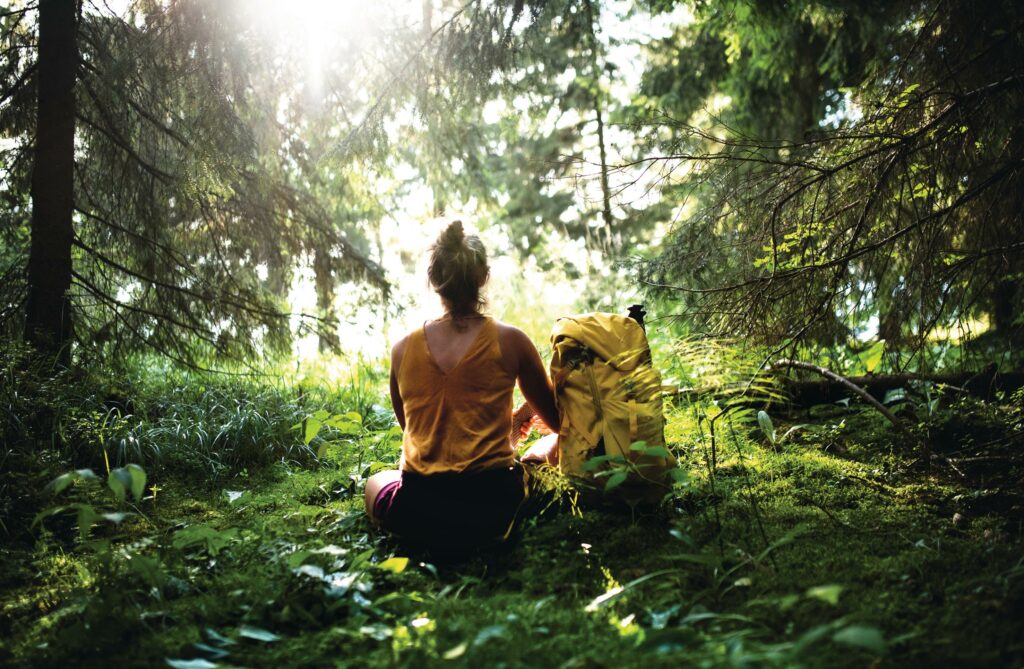
While our ancestors were active, when there wasn’t work to do, they rested. Research suggests the Hadza spend almost 10 hours of their waking time resting. But rather than lounging on sofas, they adopt ‘active resting postures’ on the ground. “There is more muscle activity when you sit on the ground, be it cross-legged, kneeling, in a low squat or with legs outstretched,” says Beadle. “And unlike when sitting on a comfy chair, your body will periodically tell you to vary your position.”

Sam Pyrah is an experienced journalist and author who lives in Rye, East Sussex. She specialises in running, the outdoors and the human connection to the natural world. Her latest book is Run Your Best Marathon (Bloomsbury Sport, £15.99).
THE CAVEMAN DIET
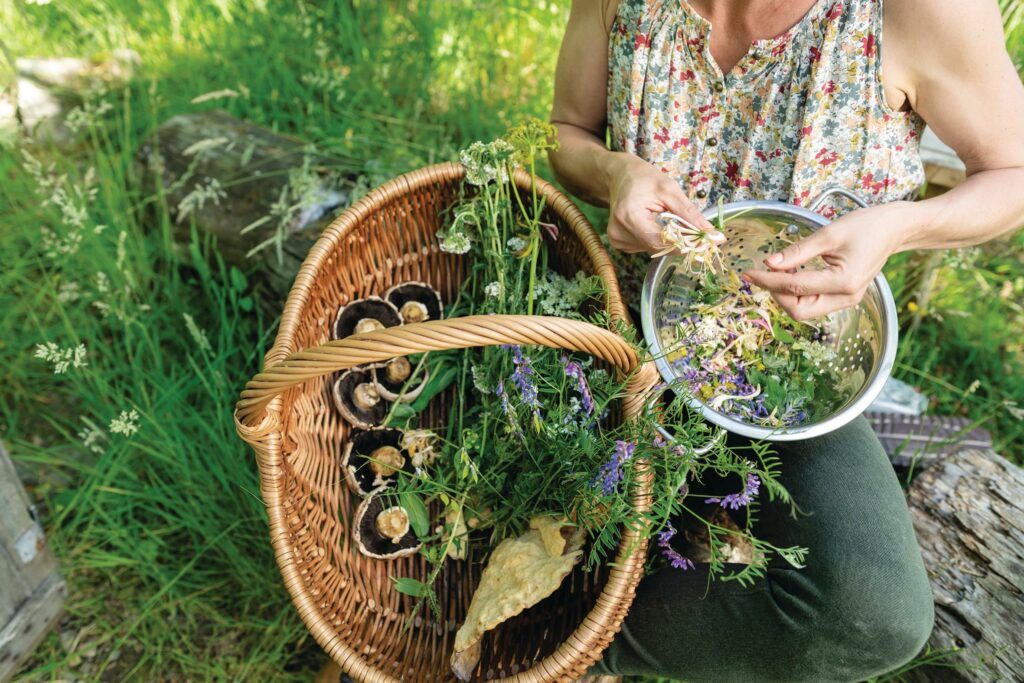
Modern diets lack neither choice nor abundance. Yet we are not eating well. A study published in The Lancet found that 14% of UK deaths were directly attributable to poor diet – too much salt, sugar and saturated fat, too little fibre, vegetables, nuts and seeds. Highly processed foods (made in a factory with industrial ingredients and additives) are a growing problem – making up more than 50% of the UK diet.
Michael Pollan’s famous maxim is: “Eat food. Not too much. Mostly plants.” Very little modern food matches the diet we evolved to eat. Contrary to the image of Palaeolithic humans gorging on meat, it’s estimated their diet consisted of 70% plants – fruit, fungi, leaves, seeds and tubers. Yes, they ate energy-rich food such as meat, fish and honey, but the difficulty in procuring these made them supplemental foods rather than the mainstay. They also ate sporadically. “In modern-day hunter-gatherers like the Hadza, obesity is absent, and overweight is rare,” says Lieberman. “They suffer much less from chronic, non-infectious diseases like heart disease.” Their gut microbiome is typically 30% more diverse than the average Brit’s, which is linked to a lower risk of diseases and allergies.
Photos: Getty, Stuart Jackson-Carter